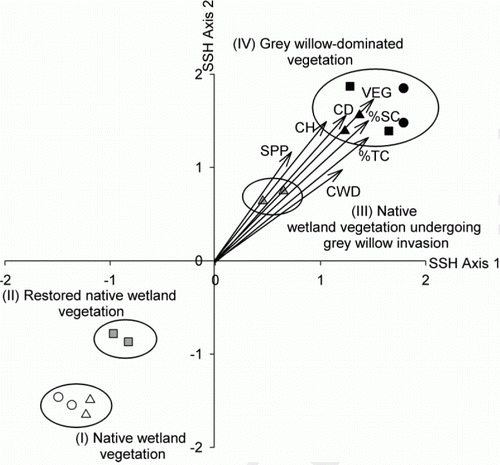Figures & data
Figure 1 Map of the study area in the Waikato, North Island, New Zealand, showing the locations of the three wetlands (Whangamarino, Toreparu and two Horsham Downs peat lakes—Lake Kaituna and Lake Tunawhakapeka) in which beetle communities were sampled using Malaise traps.
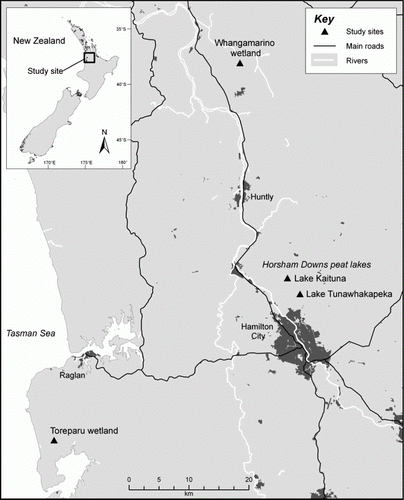
Table 1 Number of plots in each vegetation type within the Waikato wetlands.
Table 2 Akaike information criterion (AIC) values for three possible models fitted to beetle abundance data.
Figure 2 Total abundance of beetles collected from a Malaise trap within two plots at each vegetation type in the Waikato wetlands. N, native wetland vegetation; R, restored native wetland vegetation; I, native wetland vegetation undergoing grey willow invasion; W, dense grey willow-dominated vegetation; WH, Whangamarino; TO, Toreparu; HD, Horsham Downs peat lakes.

Table 3 General linear model (GLM) of beetle abundance at the four vegetation types and wetland sites.
Table 4 Akaike information criterion (AIC) values for three possible models fitted to beetle species richness data.
Figure 3 Beetle species richness sampled from a Malaise trap and plant species richness recorded from the sampling plot within each vegetation type. Closed circles, beetle species richness; open circles, plant species richness; Native, native wetland vegetation; Restored, restored native wetland vegetation; Invaded, native wetland vegetation undergoing grey willow invasion; Willow, dense grey willow-dominated vegetation.
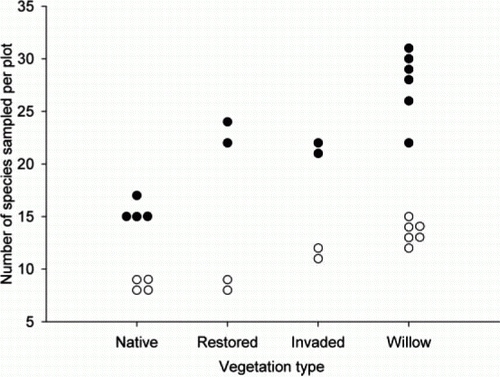
Table 5 General linear model (GLM) of beetle species richness at the four vegetation types.
Figure 4 Proportion of native and introduced taxa sampled from each vegetation type. A, Proportion of beetle species caught per vegetation type. B, Proportion of beetles caught per vegetation type. C, Proportion of plant species sampled per vegetation type. Black bars, native species; light grey bars, introduced species; dark grey bars, status unknown. Note: n, the number of plots/Malaise traps per vegetation type ().
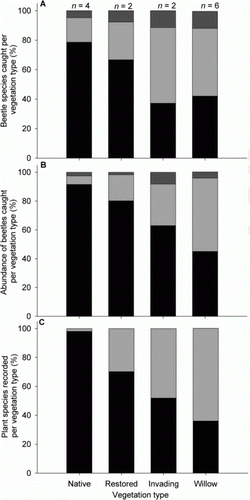
Figure 5 Trophic structure of beetles caught from Malaise traps in each vegetation type. A, Proportion of beetle species caught per vegetation type. B, Proportion of beetles caught per vegetation type. Black bars, detritivores; light grey bars, predators; dark grey bars, herbivores. Note: n, the number of plots/Malaise traps per vegetation type ().
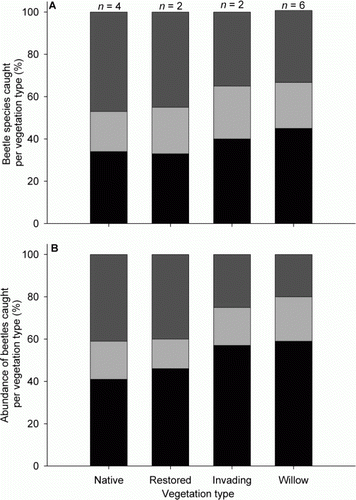
Figure 6 Two-dimensional semi-strong hybrid multidimensional scaling (SSH) ordination of beetles caught in 14 Malaise traps (symbols) and significant (P<0.01) environmental variables (arrows). Four vegetation type groupings identified by the FUSE clustering analysis have been superimposed as ellipses around plots with similar species composition: (Group I) plots dominated by native wetland species, (Group II) restored native wetland plots, (Group III) native wetland plots undergoing grey willow invasion and (Group IV) grey willow-dominated plots. The vegetation type and wetland sampled are: open circles, native wetland vegetation at Whangamarino; open triangles, native wetland vegetation at Toreparu; grey filled squares, restored native wetlands at a Horsham Downs peat lake; grey filled triangles, invading grey willow plots at Toreparu; closed squares, grey willow-dominated vegetation at a Horsham Downs peat lake; closed circles, grey willow-dominated vegetation at Whangamarino; closed triangles, grey willow-dominated vegetation at Toreparu. See and text for environmental codes. The angle between environmental arrows indicates the degree of intercorrelation in their effects on beetle community composition.
